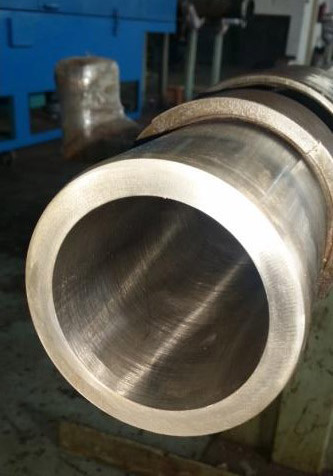
Adeptech Engineering in collaborations with local and oversea metal coating companies to combine the expertise of total surface coating technology, providing a range of wear and corrosion resistant coatings to industrial sectors. In addition, the company will be able to offer customers a one-stop solution’s shop covering technical sales, research and development, and coating design Support.
Any portion of a part that is equally wetted by the electroless nickel solution will plate uniformly including blind holes and the inner diameters of tubing or fittings.
The codeposited phosphorus in the deposit increases the lubricity over that of traditional nickel plating and the percentage of phosphorus in the coating also affects deposit properties such as magnetism, corrosion resistance and hardness. In addition, a post-plate baking at temperatures above 260C can transition electroless nickel deposits from an amorphous as-plated state to a crystalline structure, greatly increasing hardness.
Application of electroless nickel (EN) is especially suitable for complex shaped products because coating thickness can be controlled within ± 2 microns accuracy. This cannot be achieved in any electroplating process due to thickness variation resulting from non-uniform current distribution. To get a pore-free surface the coating thickness shall be at least 25 microns. Depending on the type of EN bath the phosphorus-content varies from 8 – 13%. Higher phosphorus-content gives higher corrosion- and chemical resistance of the coating, but also results in less magnetism and less solderability of the coating. With a thermal post treatment the EN-coatings can be hardened up to 1000 HV.
 |
 |
| Before Deep scratches |
After EN built up to 130micron thickness |

Automotive applications such as fuel injection rails, pistons, shock absorbers, carburetors, fuel pumps, slip yokes

Applications for the oil and gas industry such as ball valves, drilling components, tubular components, cable glands, gate plugs

Applications within heavy machinery, consumer electronics, and food industries